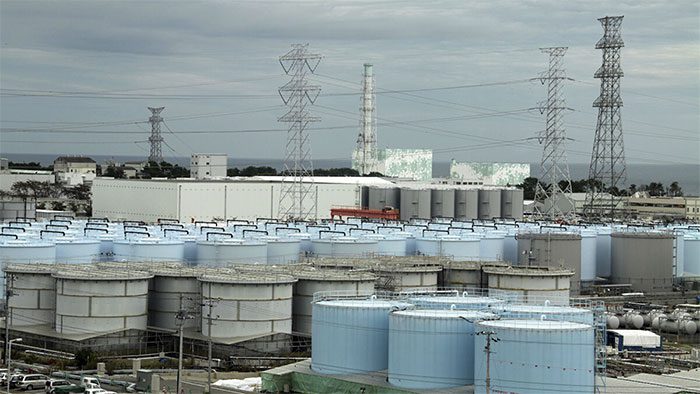According to Reuters on February 7, approximately 5.5 tons of radioactive water leaked from a device at Japan’s Fukushima nuclear power plant.
Specifically, around 8:53 AM on February 7 (local time), workers discovered the leak from the outlet of a device used to filter radioactive water during equipment inspection, as reported by Fukushima Central Television citing information from Tokyo Electric Power Company (TEPCO).
TEPCO estimates that the leaked water is about 5.5 tons, which may contain 22 billion becquerels of radioactive substances such as Cesium and Strontium, according to TEPCO’s report. Most of the leaked water appears to have seeped into the ground, but monitoring of nearby drainage channels has not shown any significant changes in radiation levels. TEPCO has designated the leak area as a restricted zone.

Fukushima Nuclear Power Plant in Fukushima Prefecture, Japan.
Impacted by the strong 9.0 magnitude earthquake and tsunami on March 11, 2011, the Fukushima nuclear plant experienced a Level 7 nuclear incident, the highest on the international scale for radioactive and nuclear events, according to Xinhua News Agency.
The Fukushima plant has produced a significant amount of radioactive water from cooling nuclear fuel in the reactor buildings. The radioactive water is being stored in tanks at the facility.
On August 24, 2023, Japan began releasing treated radioactive water from the Fukushima plant into the Pacific Ocean. Tokyo asserts that this water release is safe and notes that the International Atomic Energy Agency (IAEA) has also concluded that the impact of the treated radioactive water release on humans and the environment is “negligible,” according to Reuters.
The Chinese Ministry of Foreign Affairs called the discharge of radioactive water an “extremely selfish and irresponsible act,” stating that this action would “increase risks globally (and) pass on pain to future generations of humanity.”
Tokyo criticized China for spreading “baseless scientific claims.”



















































